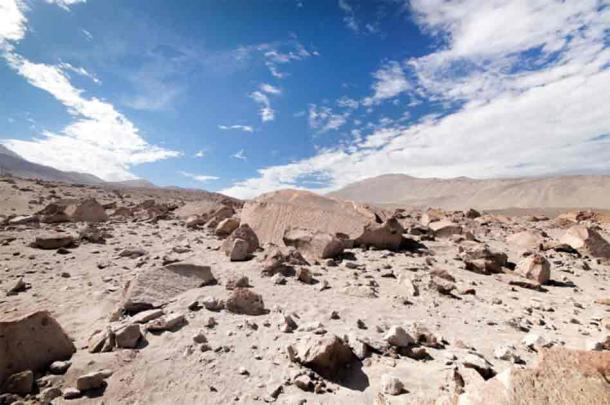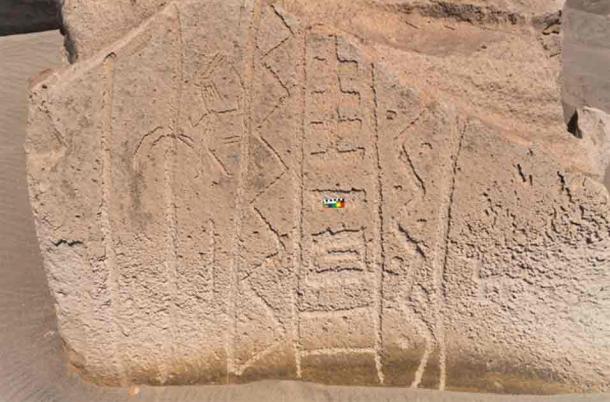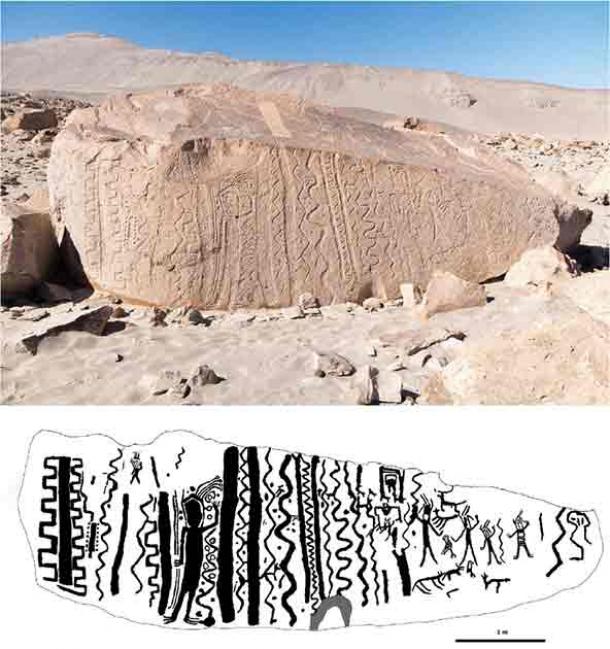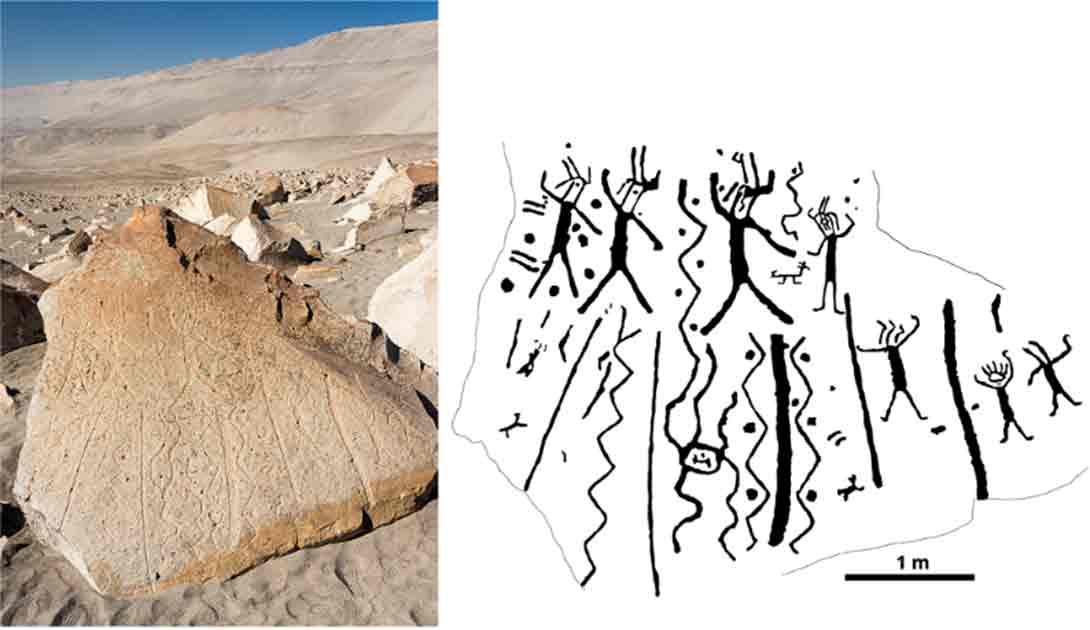Are Toro Muerto's Petroglyphs in Peru Hallucinogenic Visions in Stone?
A new study has offered a fresh perspective on the enigmatic petroglyphs discovered at Toro Muerto in the Peruvian coastal desert. The site contains intricate designs and petroglyphs, etched onto over 3000 volcanic rocks, dating back to the Wari Culture of the Middle Horizon era (500-1000 AD). These have long puzzled archaeologists due to their unique blend of anthropomorphic figures, geometric motifs, and enigmatic symbols, but some light might have been shed on this marvel now, suggesting a connection to the afterlife!
- Study Reveals Rare Aboriginal Rock Art’s Link with Sorcery and Magic
- Psychedelic-Induced Mystical Experiences Throughout History
Toro Muerto Petroglyph Phenomenon
Toro Muerto, meaning "dead bull" in Spanish, is a significant rock art complex located southern Peru, nestled within a desert gorge near the Majes River Valley. Encompassing an expansive area of approximately 10 square kilometers (3.86 sq mi), this site holds around 2,600 volcanic boulders, each adorned with ancient petroglyphs. These petroglyphs vary in size and complexity, ranging from small stones featuring single motifs to massive boulders adorned with intricate arrays of multiple images.
- Ancient Wari Culture of Peru Prevented Wars with Beer Parties
- 2000-Year-Old Monolith Reveals Hidden Symbols in Amazon

Figure 10. Boulder TM 1219 in wider landscape perspective. (A. Rozwadowski, Wołoszyn JZ. / Cambridge Archaeological Journal)
Traditionally, interpretations of the geometric patterns, particularly the zigzag lines, leaned towards symbolism related to snakes, lightning, fertility, and water cults. However, the latest research published in Cambridge Archaeological Journal, challenges these notions, drawing parallels with the artistic motifs of the Tukano people of the Colombian rainforest.
Tukano Culture and the Afterlife
The Tukano culture, deeply intertwined with visionary experiences induced by the consumption of the psychoactive brew yajé/yage, crafted art forms characterized by concentric circles, dots, wavy lines, zigzags, and crenellations. These motifs were believed to represent creation myths conveyed through dance and song rituals accompanied by musical instruments.
Previous research has suggested that many of the carvings at Toro Muerto were created during rituals by individuals who may have consumed ayahuasca, a psychoactive brew made from hallucinogenic vines.
Inspired by this cultural connection, the study authors propose a groundbreaking interpretation: that the petroglyphs at Toro Muerto might be abstract representations of ancient songs. They argue that just as the Tukano encoded their songs into visual art, the Wari people may have similarly depicted their sonic heritage through geometric patterns etched into stone.
The petroglyphs at Toro Muerto present a distinctive combination of dancing human figures, known as danzantes, intertwined with intricate geometric motifs, particularly zigzag lines. These geometric patterns, often juxtaposed with the danzantes, might symbolize the aforementioned ancient songs. The hypothesis extends to suggest that certain complex compositions featuring danzantes alongside linear geometric motifs could serve as graphic metaphors representing journeys to the afterlife or transfer to the other world.

At this rock a danzante is part of a complex composition which includes straight, zigzag (also filled with dots) lines, and a crenelated pattern in the center. (A. Rozwadowski, Wołoszyn JZ. / Cambridge Archaeological Journal)
A danzante typically embodies a schematic representation of an anthropomorphic figure, typically measuring between 20 to 30 centimeters (7.87 to 11.81 in) in height, although occasionally larger examples exist. These figures are often depicted in dynamic poses, with one arm raised and the other lowered, standing on slightly spread legs, sometimes with bent knees. The head of the danzante is commonly depicted facing forward or in profile, adorned with a headdress depicted as parallel lines, explains a press release.
Some danzantes feature clearly defined facial features, including marked eyes and other indications, possibly representing facial painting or patterns on masks, often resembling zigzag lines. Despite some danzantes appearing in more static poses, their portrayal as dancers is generally accepted due to their dynamic presentation and contextual associations.

The predominant complement to danzantes are zigzags, which van Hoek (2003, 16) asserted as central to the essence of the 'dancer' at Toro Muerto. (A. Rozwadowski, Wołoszyn JZ. / Cambridge Archaeological Journal)
Across a Multitude of Cultures: Images and Songs
Citing examples from Mesoamerican iconography, such as the Maya, Mixtec, and Nahua codices, which also feature dots, lines, and spirals possibly representing songs, the authors posit that the graphic depiction of music in petroglyphs might have been a widespread phenomenon across diverse cultures.
“In our study we show that some geometric images could have been representations or embodiments of songs themselves, in their own right, independent of any depictions of mouths or bodies. We base this study on the case of the petroglyphs at Toro Muerto in Peru, while the source of our interpretative proposal is ethnographic knowledge, more precisely an ethnographic analogy from Amazonia, specifically the art of the Tukano people,” write the authors of the study.
The researchers propose that due to the similarities observed, it is plausible that the petroglyphs at Toro Muerto were carved by individuals who were consuming hallucinogenic plants. They also suggest that the imagery surrounding the dancing figures seems to depict individuals attempting to capture the sensations and emotions evoked by the music while under the influence of a yet-to-be-identified hallucinogenic substance.
Top image: Geometric petroglyphs at Toro Muerto, Peru, possibly represent ancient songs and human figures dancing. Source: A. Rozwadowski, Wołoszyn JZ. / Cambridge Archaeological Journal
By Sahir Pandey
References
Milligan, M. 2024. Geometric petroglyphs at Toro Muerto may represent ancient songs. Available at: https://www.heritagedaily.com/2024/04/geometric-petroglyphs-at-toro-muerto-may-represent-ancient-songs/151387.
Rozwadowski A, Wołoszyn JZ. 2024. Dances with Zigzags in Toro Muerto, Peru: Geometric Petroglyphs as (Possible) Embodiments of Songs. Cambridge Archaeological Journal. Available at: https://www.cambridge.org/core/journals/cambridge-archaeological-journal/article/dances-with-zigzags-in-toro-muerto-peru-geometric-petroglyphs-as-possible-embodiments-of-songs/927CAB01B6EE403E46904A2B04F2A6AE.

















